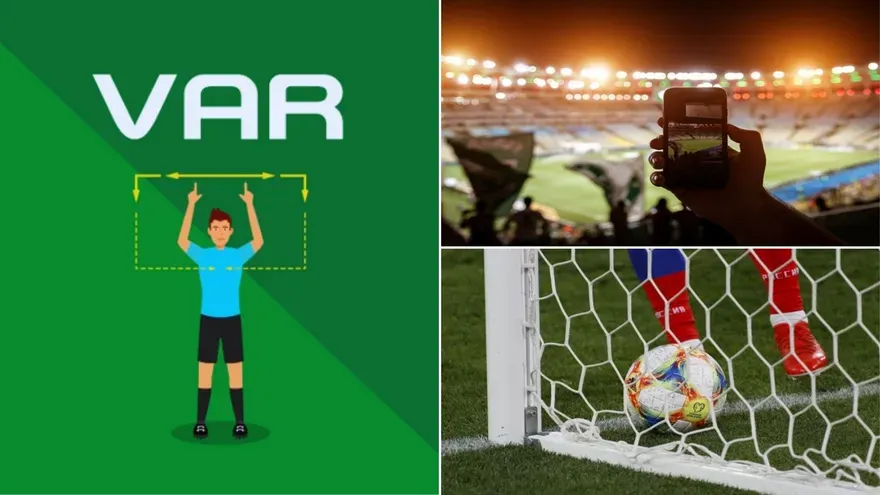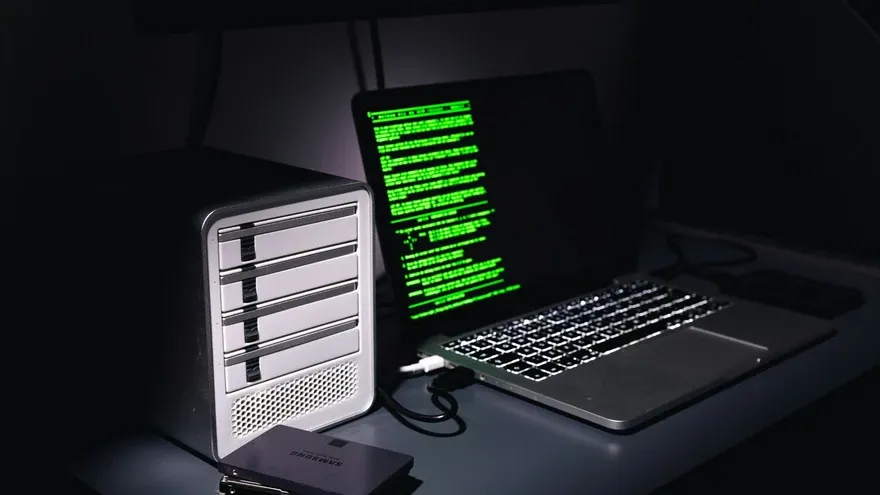A deafening roar of a crowd of over 40,000 people greets Sachin Tendulkar and Virender Sehwag as they walk out into the field for the finals of the 10th ICC Cricket World Cup. A crowd of over 135 million Indians, cheer from their homes, glued to their television sets, watching the match through my eyes and the eyes of my 25 other Cameramen friends, waiting in anticipation for The God to send the ball flying in all directions. Thanks to Jayawardene’s fantastic century and Perera’s Six on the last ball of the Lankan innings, India need to chase 274 runs to lift the much coveted World Cup for the second time. Can Sehwag continue to deliver today also? Can he get off with a four on the first ball? Will Sachin post his 100th hundred today? These questions rack my mind as I pan my camera to focus on the Indian cricketing icons. Lasith Malinga, the lord of in-swinging yorkers has the ball, and Sehwag, one of India’s best openers, stands at the striker’s end, ready to wield his willow, the crowd howls in anticipation, and I wait at Long On, approximately 5 meters from the boundary, ready to bring out the artist in me and hoping to catch Sehwag’s mighty Six on the first ball with my camera!
First ball, Malinga to Sehwag, no run, not a four, not a six. Short of a length outside off, Sehwag stays behind the line and punches into the covers.
The second ball, Malinga runs up and releases the ball with his God-Knows-What action, I follow it closely and Bang!
OUT.
Sehwag has been given LBW, much to the dismay of his thousands of fans and my fowl cries. The decision has been called to a review, almost immediately. It’s at moments like these, I miss being in front of a TV. It’s quite painful to wait without being able to watch a replay of such a critical-to-match ball.
Cricket coverage and the related technologies have undergone an exponentially positive change since the 2000s. Mass scale tournaments like the ICC Cricket World cup and The IPL have infused unfathomable capital in the game of Cricket which in turn has evolved into cutting edge camera technology, ultra high definition recording setups, hawk eye technology, Snickometer, and speed guns to name a few. The introduction of Twenty-20 has made the game much more fascinating and glamorous. But beyond all this, it is the advancement in the coverage of Cricket which has made this game so popular. Can you imagine, how painful it would have been to follow cricket and your favorite cricketing stars, if today also, it was all black and white, with no definition, with no slow-motion replays, no wagon wheels, no hawkeyes and no super cool infographics which reach you through channels like Television and Internet? It all starts with the Camera!
The best possible zoom lens which was available in the 80s was capable of pumping up to 30X, as compared to 110X, which is available now. A seven-cam/two-Video Tape Recorder cricket coverage setup which was so radical in 1977 has given way to using 33 cameras, which include 18 manned prime cameras. These cameras include two or four super slow Motion cameras, two or four ultra-motion cameras, umpire cam, spider cam, heli cam etc. And the specifications are changing every day for every event.
But who drives all this technology? It’s me. The Cameraman!
Sehwag was the top scorer for India, in the 2003 World Cup Final, but Malinga made sure that feat won’t get repeated today. Gambhir walks out into the field now. India needs his contribution now more than ever. Meanwhile, at the non-striker’s end, Sachin maintains a calm focus.
Third ball, Malinga to Gambhir, FOUR, Malinga smiles. Misfield at square leg. Fast and back of a length on leg stump, Gambhir calmly turns it away off the pads to the leg side, and the fielder at square leg dived over it but missed. They must be playing all of Gambhir’s fours in the world cup now, a glamourous amalgamation of Gambhir’s shots captured by my teammates.
In terms of action replays, technology has gone through radical shifts. Earlier a Video Tape Recorder or a VTR as we call it, jog dial had to be operated manually for showing the replays. Telecasting a highlights only package was difficult and for showing packages from previous matches, post-production was the only way. However with technology having turned digital, now all the recorded data is stored on hard disks. Cameras with high shutter speeds and high frame rates have entered the broadcasting industry. The increase in the no. of frames per second produces very sharp replays of split-second incidents, which enables umpires to take calls on 50-50 and tough decisions.
Malinga owns the over after that Four off the third delivery. Dot. Dot. Dot. With three dot balls in a row, India has finished with Four runs for the loss of Sehwag’s wicket at the end of First over. Kulasekara has been given the ball for the second over. The Indian crowd, at the Wankhede stadium in Mumbai, defies all laws and roars in cheers for their champion, as the Master Blaster comes on strike. For me, in all these years, it has been a treat to see up close, how Sachin Tendulkar has made himself an icon of hope and belief in the eyes of millions of people all around the world. Though covering the world cup matches, which are played almost every other day, is a thoroughly taxing job, travelling like a gypsy caravan with all the equipment to 10-12 locations for about sixty matches, in the space of four to six weeks, it is outstanding players like Sachin, who make all this worth it. The feeling of being responsible for enabling millions of people all around the world watch this legend leaving behind milestone after milestone is an indescribable feeling.
It is quite a job to move from one place to another with our massive recording equipment.
The camera assembly comprises wheels, legs, head, cradle, lens, camera, viewfinder, headset, the zoom and focus controls. Each component is placed in a separate numbered box. These numbered boxes are brought into the stadium and placed in the respective positions where the cameras have to be installed. The camera crew comprises approximately 12 members who are divided into teams of 5+5+2. (In a 26-camera set up, the number of cameramen may be 18/19) The two members separate various boxes which comprises the camera assembly. They sort these boxes and send them to the various positions of the stadium as stated in the diagram. The remaining two sets of cameramen lay out the cables to the camera positions at various ends of the stadium and connect them to the control rooms. This entire process, known as rigging, takes approximately 2-3 hours. Rigging of other equipment in the control room is also done by their operators. This is generally done two days before the match day, thus technicians get enough time to check and recheck this equipment. In the case of day-night games, the matches are over at 11.00pm. The cameras are derigging (each component is placed again in the respective numbered boxes). Similarly, other equipment is also placed in the respective boxes by their operators. All of this equipment is handed over to the engineering department of the TV crew who in turn get in touch with the movers and packers who transport it from the stadium to the airport. By the time the crew is done with the derigging process, it is already between 1.30am and 2.00am when we are back to the hotel.
We pack our luggage and keep it out in the lobby. We have our bath and get done with things like shaving so that we can be in bed by 3am as we need to wake up at 5.30 in the morning to catch the flight to the next venue. By the time we reach the next destination it’s around 10/11 in the morning. We need to report at the stadium by 2 o’clock, where the movers and packers have already placed the equipment at the venue control room. By the time the cameras and cables have been rigged (assembled) like the earlier venue, each cameraman responsible for his respective position adjusts the camera to his convenience depending on the height and posture (standing, crouching, sitting etc.) he is most comfortable with, while capturing the game.
The second over is about to start with one slip in place. First ball, Kulasekara to Tendulkar, 1 run, The master is away. Back of a length on off stump, he stands tall and guides backward of point. Another master fields it running square from third man. Maybe it will be Sachin vs Murali that will decide the 2011 World Cup. Or not.
Second ball, Kulasekara to Gambhir, no run, hmm, Gambhir is dealing in inside edges for now. Kula gets one to come in seemingly innocuously from a length around off stump as Gambhir presses into a drive. Edged to the leg wide. Tendulkar and Gambhir are just ambling around for now, adding runs in singles and doubles. At the end of second over, India has Ten runs on the board.
Malinga’s bowling is not helping India’s cause. As Sangakkara moves up to the stumps for the fourth over, Tendulkar has passed his previous maximum score in Cricket World Cup finals by getting two runs off the second ball of Kulasekara’s over. Sachin threads the covers again. Dextrous. Kula sends down the leg cutter on off stump and Sachin sees it nipping away, he waits and opens the face to get the runs between cover and point. He stands at Ten runs. As I prepare to cover the next delivery, I send a silent prayer, to one God, asking him to help the other get his 100th hundred and a World Cup.
Third ball and Wham! Looks like my prayers have been answered. Short of a length on middle and off, Sachin leans out and meets it on top of the bounce and powers it past Kula for a beautiful boundary.
Fourth ball. The crowd is shouting on the top of their voices now. Chanting Tendulkar’s name. Dot! Ooohs and Aaahs from the fans fill the stadium.
Fifth ball. FOUR again. Any doubts over Sachin's bat now?
I continue to pan and tilt. Tilt and zoom. Focus and Refocus. As Gambhir and Tendulkar make the ball dance across the field, a dance along with my camera. There is tremendous pressure on sports cameramen now a days, no one knows when the umpires would need to see their shot to reach a conclusive decision. India has sailed to the start of the seventh over now.
Malinga to Tendulkar. First ball. An edge and OUT. There will be no 100th hundred today. Wankhede is silent. India is silent. As the Master, walks back to the pavilion, after scoring 18 runs off 21 balls, the whole stadium stands up as one, in respect of the legend that is Sachin Tendulkar. I follow him with my camera, as he continues his walk down the ground, to the applause of thousands of his fans. The feeling, that is Sachin, as the fans preach and critics agree, has evolved to something that can’t be measured in runs.
It’s Virat Kohli now. And Gautam Gambhir. India need 244 more runs. Besides an extra run, the scoreboard remains stationary at the end of the over.
As the game progresses, I think about what is at stake today? If India want to win this tournament, there is very little scope for error today. Virat and Gautam have taken us to 105 at the end of 20 overs.
There cannot be a more thankless job than umpiring as far as cricket is concerned. The constant scrutiny one is under in, it is the only job where you are expected to have a 0% error ratio! For us it is often imperative that we are at the peak of our health and stamina levels while we are covering games. Unlike a cricket match where you have a squad of 16 to replace one of the payers in the 11 if they get injured, there is no such scope in our field. Since our job is a specialist job there is no one to replace us or act as back up. In fact while we work we only sip water to keep our lips wet as too much water consumption would mean leaving the camera for a toilet break! And in our field every camera position is a specialist job! Throughout the day we are on light snacks like muffins for breakfast. Foreign crew members try to avoid lunch or have minimal snacks to ensure that their stomachs are in order while we are covering the games. Hence we have to be very careful of the water especially, as the last thing you want to have is a stomach upset while on tour. The sleep patterns obviously get disturbed especially during day/night games and Test matches (which requires one to wake up early in the morning). No spicy food and no late night outs during Test matches. At times it is almost considered unprofessional if we fall sick (especially in the initial days) as the next time, the channel may think twice before engaging us again.
Dilshan has struck for Sri Lanka in the 22nd over. Kohli is gone. The captain himself has come out to the party now. Can he play a captain’s knock today? Can he finish this for India? Now Dhoni’s job is hazardous too. To captain a country like India, where people as well as the media, judge your each and every move, is as deadly as covering aerial shots from the massive height of the floodlight towers.
That was many years back! Now spycams do that job. Due to security concerns, aerial shots from floodlight towers have reduced drastically. In fact in some stadiums, some issues were raised that such shots might give ideas of distances and directions to fractious elements who are likely to create trouble as those shots gave a view of famous landmarks near the stadium like government buildings. Now cameras on the tower are not allowed. The High 45 Camera is placed at the highest available point in the stadium.
Meanwhile, it is the end of 35 overs now. India stand at 183 for the loss of 3 wickets. Gambhir is trotting towards his century with 88 runs on the board, while Dhoni continues to chip in boundaries every now and then. India need 92 runs from 15 overs now. He has chosen the right match to play a captain’s knock. As the match progresses, Dhoni completes his fifty with a four. India is playing it really cool. With one of the most powerful batting line-up in the world, they continue their fight. Sri Lanka is using all the ammunition in their bowling arsenal but to no result. At the end of 40 overs, we need 54 runs from the last 60 balls. Achievable, I think!
Some people ask me if I feel that a little more acknowledgment of my work by audiences and broadcasters will give me that added zest, especially on a dull and tedious day. It might. But the audience watching the game with earnest interest is reward enough for me. I wonder, that when people watch a game of cricket on the TV screen, how much will they even think of the people who are bringing to viewers like us these wonderful shots.
Parera has taken Gambhir off the game now. No hundred for him today. "Needless shot," says Ravi Shastri on air and you can't argue with that. It was the shot for the crowds. He rushed down the track, got outside leg and went for the slog. Misses. Clatter! What a knock it has been so far, though. Under pressure, Gautam has delivered. But has he left the door slightly ajar now with that shot? He had the chance to slam it shut on the opposition but he has given them a whiff now. Wankhede crowd stands to applaud this knock in a World-cup final chase.
After the ball is changes again, it’s a flurry of fours and sixes, from Yuvraj and Dhoni. Victory seems within reach now, with these two magnificent batsmen fighting for India. Meanwhile, ICC has named Yuvraj Singh as Man of the Tournament. What an honour! What a moment for India.
At the start of the 49th over, India need 5 runs from 12 balls. Yuvraj is on strike. Millions of Indians around the world watch him through my eyes, waiting for the cherished moment, which is just a six away.
First ball. Kulasekara to Yuvraj Singh, 1 run, full delivery outside off stump, squeezed out to point for a single.
It’s MS now. Kulasekara comes in to the second delivery and releases the ball to a thunderous shot from the captain. Indian contingent have gone mad. The dressing room erupts with joy. Dhoni had a poor batting record in World cups. 34 was his highest. And what does he do? He promotes himself and has played a fine knock to pull this off. Yuvraj envelops him with a hug. What a knock from Gautam Gambhir and Dhoni. Spare a thought for Mahela Jayawardene who unfurled a sublime knock to set up this target. It's India's night though. It's Dhoni's night.
India are the world champions !!














